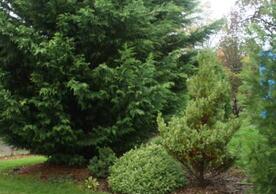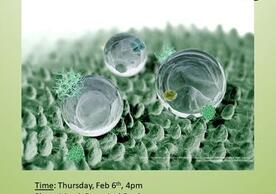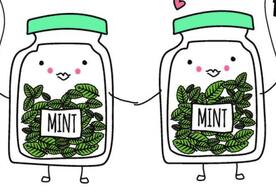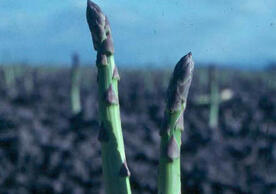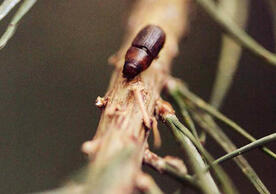Chamaecyparis pisifera ‘Cream Ball’
I had a busy day today, starting with a drive through the rain to VanWilgen’s Nursery and Garden Center in Branford, where I was a clerk in the judging process of the Connecticut Orchid Society. I learned a lot from three very open and agreeable judges who blessedly asked the clerks’ opinions and more blessedly gave us their points of view in judging the different categories. Of course orchids are a huge plant family, with new varieties, hybrids and introductions almost daily. The breadth of knowledge of the three judges was amazing, and their willingness to impart same to us who were clerking with them was much appreciated by all. I highly recommend the orchid show, which can be visited today, tomorrow and Sunday (see http://www.ctorchids.org/)
Then instead of eating lunch with the judges and clerks like a sensible human being, I hightailed it back to the Whitneyville Market to pick up something sweet for a Tea and Tour that I was scheduled to lead at one here at the garden.
So we had a bonny group of lovely folks from the Yale University Press come by for a visit. The Tea and Tour event is designed to give Yale units a chance to visit us, for us to do some outreach, to learn what other people do for Yale and to enhance everyone’s experience of working at Yale. The tour takes, well, it can take all day if people are able to spend the time, but I try to keep it to an hour –and-a-half, to not cut into our work day too much. After all, we must earn our daily crust.
A plant that caught my eye first in a catalog, and then of late here in the garden is the Cream Ball Sawara False-cypress. Is it alright if I just use ‘Cream Ball’ from now on in this article? Even the common name is unwieldy when written in toto. First purchased in 2005, this little plant came in a very small container, about a quart. It doesn’t grow very quickly, so it has taken this long just to put on enough size to distinguish itself.
The next year, I planted a lot of trees and shrubs in a collection that I labeled ‘the scaled-leaf confier collection,’ as opposed to the ‘needle-leaf conifers.’ Needle-leaf conifers are pines, spruces, true cedars and firs. They have distinctive needle-like leaves, either long or short, in clusters (like pines) or held singly along the branch. The scaled-leaf conifers have plated leaf structures that overlap one another, like chain mail. When viewed with a hand lens, you can see that they are like scales on a snake. Some plants like some Juniper species have scaled foliage, but also very sharp needle-like immature foliage, on new shoots. So this whole thing can be a little confusing, but trust me, you can’t mistake most scaled-leaf conifers for the needled varieties.
What you might have a hard time with is distinguishing between a Thuja and a Chamaecyparis. Scaled-leaf evergreens also include cypress, sequioa, redwood, juniper, thujopsis and a few others. So I have planted most of these genera in the small area here at the garden so designated for them, and they are finally reaching a size to comment upon. Every one of them was planted as a foot tall stripling, weeded oh so meticulously (do you detect the drip of irony?), kept the mowers the hell away from and otherwise left to their own wiles.
Most of these evergreens, and especially the Cream Ball are sun-loving, and need good to excellent soil drainage. They don’t need much in the way of fertilization, and in fact this can harm the delightful coloring on some varieties. I learned the hard way that a Golden Thread-leaf False Cypress loses its golden color when the fertilization of the adjacent roses got carried through to their root zones. Oh well. Prune away the dead when you see it and you have not much else to do.
Cream Ball grows slowly to two or three feet tall with an equal spread. When I say slowly, I mean only two or three inches a year. This makes it ideal for the rock garden or the Zen contemplation garden. It is not floriferous, doesn’t dance in the breeze, emit scent or produce berries. It’s a nice quiet well-behaved shrub with white variegated foliage, that adds nice form and textural contrast, especially in winter when not much else is happening in the garden. Used in a planting with other evergreens with different colors, forms or textures, you can create a wonderful winter-interest garden that would remain ‘subtle’ the rest of the year, perhaps adding the backdrop for other plantings during the summer. Used as an accent in the perennial or shrub border, it will provide at least a little something during the long dreary winter months.
So please come and take a look at ours, perhaps tomorrow for the Tree Tour at ten-thirty in the morning.
Best, Eric
Top photo: This shows the Cream Ball nestled ‘neath the boughs of Leyland Cypress, another scaled-leaf conifer. Plant to the right of Cream Ball is also a variegated False Cypress with a more upright form. The image below shows the nice tight globular form of Cream Ball, with its white variegation of green leaves.
